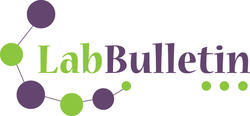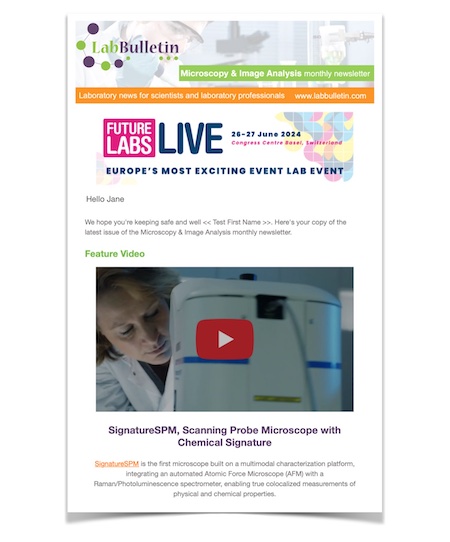Members Login

Channels
Special Offers & Promotions
Possible Cause Discovered for Failure of Targeted Liver Cancer Therapies
The failure of experimental liver cancer therapies directed specifically against the EGFR protein is presumably the result of insufficiently specific patient selection.
 This is the conclusion that can be drawn from data that were obtained within the framework of a project carried out by an Austrian Science Fund FWF doctoral programme, and that have now been published in NATURE Cell Biology. The data prove that the tumour-promoting effect of EGFR originates, not directly from its expression in the tumour cells, but rather from its presence in the surrounding cells (macrophages) of the immune system. This predicts that experimental anti-EGFR therapeutic agents will prove effective only in patients who exhibit EGFR in the immune cells. This expanded understanding of the occurrence of EGFR in macrophages now offers, however, potential new approaches for the treatment of liver cancer.
This is the conclusion that can be drawn from data that were obtained within the framework of a project carried out by an Austrian Science Fund FWF doctoral programme, and that have now been published in NATURE Cell Biology. The data prove that the tumour-promoting effect of EGFR originates, not directly from its expression in the tumour cells, but rather from its presence in the surrounding cells (macrophages) of the immune system. This predicts that experimental anti-EGFR therapeutic agents will prove effective only in patients who exhibit EGFR in the immune cells. This expanded understanding of the occurrence of EGFR in macrophages now offers, however, potential new approaches for the treatment of liver cancer.
Liver cancer is one of the most common malignant tumours. As treatment options are limited, the prognosis is very poor. Hopes were therefore high when, a few years ago, it was shown that a special protein – the epidermal growth factor receptor (EGFR) – accumulates in up to 70 percent of all liver tumours and promotes tumour development. It was believed that a target had been found for targeted therapies. However, the use of therapeutic agents to inhibit EGFR proved unsuccessful and the expected effect remained largely absent. Too little was known about the function of EGFR in liver cancer development. This is precisely what a research project at the Medical University of Vienna has now clarified.
SURPRISING FINDING
At the core of the work carried out at the Institute of Cancer Research were mouse models in which the presence of EGFR was suppressed in various different cell types of the liver. This made it possible to also grow liver tumours whose tumour cells were completely lacking EGFR. According to the previous knowledge, this would have been expected to result in decreased tumour growth. However, during the analysis a surprise emerged, as Prof. Maria Sibilia, coordinator of the FWF doctoral programme "Inflammation and Immunity", explains: "We found just the opposite – tumour growth increased. This was not the case for tumours in which EGFR was lacking only in the surrounding macrophages. There, tumour growth was considerably decreased." In fact, until now, it wasn't known that EGFR is even expressed in these immune cells. These liver macrophages, or Kupffer cells, become active particularly when inflammations and infections occur as a means to protect the body – the fact that EGFR has a tumour-promoting effect in these cells was not known.
To gain a better understanding of how the activity of EGFR on the Kupffer cells influences tumour growth, the team headed by Prof. Sibilia further analysed its functional mechanism. The group thereby succeeded in decoding a complex chain of cellular signalling pathways that actually leads to increased growth of liver cells. According to project team member Karin Komposch, "We were able to show that injuries to hepatocytes trigger the release of the messenger substance, interleukin-1beta. This, via diverse intermediate stages, causes EGFR in Kupffer cells to stimulate the production of interleukin-6 (IL-6), which causes liver cells to proliferate. In principle, the release of IL-6 should stimulate the proliferation of hepatocytes thus aiding in the repair of damaged tissue – but can also lead to uncontrolled hepatocyte proliferation, and thus to tumour formation."
TREATMENT & DIAGNOSIS
In the team's view, this fresh understanding now offers a new opportunity to use EGFR inhibitors in the treatment of liver cancer. These inhibitors would actually have to be used only in patients with EGFR expression in the Kupffer cells, and not in patients with EGFR expression exclusively in the tumour cells/hepatocytes. If these inhibitors were to act only in Kupffer cells, maximum reduction of tumour growth could be achieved. However, Ms. Komposch believes this work also offers another key finding for cancer diagnosis: "The presence of EGFR in the Kupffer cells could provide crucial information on the future course of tumour development, making it an important prognostic marker."
On the whole, the FWF doctoral programme findings thus provide both fundamental insight into complex cellular signalling pathways and concrete starting points for new developments in treatment and diagnosis.
Original publication: EGFR has a tumour-promoting role in liver macrophages during hepatocellular carcinoma formation. H. Lanaya, A. Natarajan, K. Komposch, L. Li, N. Amberg, L. Chen, S. K.Wculek, M. Hammer, R. Zenz, M. Peck-Radosavljevic, W. Sieghart, M. Trauner, H. Wang und M. Sibilia. Nature Cell Biology 16, 972–981 (2014) doi:10.1038/ncb3031
more about austrian science fund fwf
Media Partners


